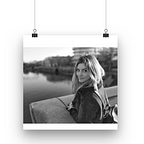Doing a design challenge for a UX/UI interview
My experience of preparing and presenting a design challenge for a Junior UX/UI Designer role
I recently completed a design challenge for a Junior UX/UI Designer role at a London-based global media company.
The challenge asked me to conceptualise what a unified and consistent in-app messaging strategy might look like across all of their (very diverse) products, thinking in particular about new feature alerts and error messages. I was also asked to include a high fidelity design of an in-app message.
So how did I approach it? After reading through the (somewhat daunting) brief a couple of times, I walked away from it and let it marinate. I did this to make sure it didn’t overwhelm me. Did they really expect me, as a junior designer, to create a comprehensive, end-to-end UX strategy for multiple divergent brands — complete with beautiful high fidelity designs — all in a couple of days? After giving the task some thought, I decided probably not. What they were really interested in was my interpretation of the problem, my ability to articulate my thought process and ideas, and my design style.
Preparing for the interview
I started out by researching in-app messaging in general. Of course, I had my own experience of messaging in the various apps I use (cookie consent is what sprung to mind first). But I knew I needed to find out a lot more about the different types of in-app messages, when they should be used and — most importantly — why. I must give a shoutout to the Appcues blog here, which is where I discovered a fantastic selection of articles with tips, tricks and best practice for in-app messaging (and much more).
Next, I researched the company’s different brands (I had already done some research for my first interview but I needed to delve deeper). Once I had a better idea of the problem space, in the context of the company I was interviewing for, I started putting together my presentation. I tried to make it as visually engaging as possible, including lighthearted icons and images (I viewed the presentation itself as an opportunity to demonstrate my design style and personality). I avoided any slides being too text heavy and I also made speaker notes — a lot of speaker notes — which I condensed with each run-through so that it didn’t feel too scripted on the day. Finally, I practised delivering the presentation remotely so I was comfortable sharing my screen whilst reading my notes, all as smoothly as possible.
The interview
Proceedings opened with a brief chat and we quickly moved into my presentation. I began by recapping what the brief was and outlining what I would talk about. I then moved into a high level overview of my design thinking, showcased using the trusty double-diamond. I talked about the research I would do (user and competitor), followed by defining the problem, moving onto testing different solutions, and finally refining those designs iteratively until a solution was reached.
After an overview of my approach, I transitioned into some specifics. First, I considered the why. Why in-app messaging? What problem are we solving for? After the why, I moved onto the how. I was limited as to what I could feasibly say here (having not actually done the weeks of research and user interviews that I laid out in my strategy overview), so instead I discussed all the best practice I’d learned about during my research.
Below is an overview of the whys (top) and the hows (bottom) of in-app messaging that I discussed in more depth in my presentation.
On a few occasions, the interviewer cut in to ask me to expand on something I’d said. I knew this was likely to happen, so when I had run through my presentation beforehand, I practised coming ‘off script’ to answer a question and then picking up where I left off. One thing I made sure I did throughout the interview was continually bring the conversation back to the user. I made it clear that any strategy would be driven by existing knowledge of users (combined with best practice) and that my design iterations would be guided by user behaviour and user feedback in testing.
I ended by presenting a couple of high fidelity designs and talking through my design choices. At this point, the interviewer asked me further questions about those choices. She also asked me what my next steps would be to take the project forward. I wasn’t quite prepared for this question (although of course I should have been) but I talked about further testing, further design iterations, and getting to know the company’s different brands even more. To finish up, I asked the interviewer a question:
Is there anything else you’d like to know that I haven’t talked about yet?
I find this question really useful, as it gives you to opportunity to fill in any gaps. Much better than the interviewer walking away thinking “she didn’t talk about that at all”.
Well, there you have it. An overview of my experience preparing and presenting a design challenge for a Junior UX/UI designer role. Every design challenge will be unique (and a real-time design challenge is a different beast altogether) but hopefully I’ve been able to provide some useful insights. Good luck to all my fellow job seekers out there. Stay positive, stay safe.
